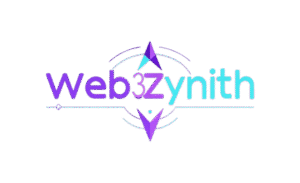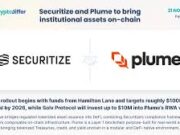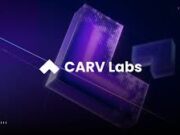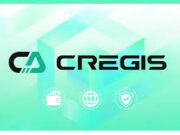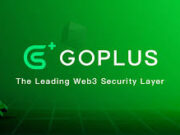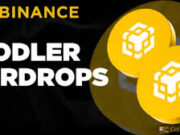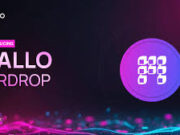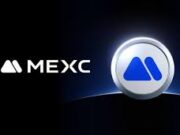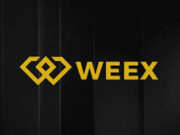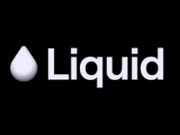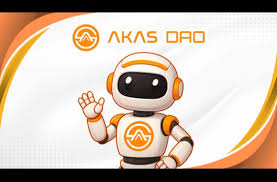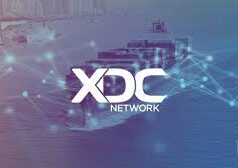Hey there, crypto enthusiasts and governance buffs! If you’ve dipped even a toe into DeFi, you’ve likely heard of DAOs—those smart contract–driven collectives that aim to replace centralized boards with token votes. Yet, for all their hype, many DAOs still feel stuck in beta mode: voting systems that exclude smaller holders, whales dominating outcomes, and off-chain coordination that undermines transparency.
Enter AKAS DAO—a fresh protocol that’s rewriting the rulebook with an on-chain governance voting system. Launched in late May 2025, AKAS isn’t just another upgrade—it’s a call for true decentralized autonomy.
Picture this: every wallet gets a meaningful say, no bots hijack governance, and decisions flow smoothly via smart contracts. In this post, we’ll examine what makes AKAS unique, why it might be a game-changer, and how it could reshape community-led project governance. Buckle up—this is code, consensus, and collective dreams in motion.
The Genesis of AKAS: From Vision to Viral Launch
Let’s rewind a bit. AKAS didn’t emerge overnight like a meme coin riding social media waves. It rose from frustration over DeFi’s recurring pitfalls—rug pulls, insider dumps, and governance theater disguised as decentralization. The founding mission: build something fairer, more robust, and community-first.
Built around a Protocol-Owned Liquidity (POL) core, AKAS draws inspiration from models like Olympus DAO—but amps them with enhancements meant to prioritize equity and security. (Fintech Review)
On May 29, 2025, AKAS unveiled its full-chain upgraded protocol via a global Genesis LP event. Unlike many launches, this one was bold: no private rounds, no insider allocations, and no liquidity control by any centralized entity. All contributions were 100% permanently locked and burned, eliminating ghost liquidity and minimizing dump risks. (PR Newswire)
This wasn’t a quiet GitHub push—it was a rallying cry. Early participants earned staking bonuses and governance access, but the twist is this: you commit to the system, you can’t back out.
What Sets AKAS Apart: Fairness by Design
So, what makes AKAS stand out in a crowded DAO landscape? For starters:
- No whitelists, no bots, no insider deals
From day one, AKAS was committed to a truly level launch. Everyone—regardless of location or capital—has the same starting point. (bisoncoop.com) - Synchronized fair launch
No private pre-allocations. No centralized liquidity control. Every LP contribution is irrevocably locked and burned. (PR Newswire) - Community-first ethos
The philosophy: trustless code, transparent contracts, and governance power resting in the hands of stakers—not insiders or whales. (akasdao.com)
In a space where trust is more precious than tokens, this approach is refreshing.
Cracking the Code: How AKAS’s Voting System Works
Enough preamble—let’s get into how AKAS’s governance actually works.
At its core, AKAS runs a blockchain-native governance system powered by smart contracts. Proposals, voting, execution—everything is on-chain and automated.
Here’s the breakdown:
- Participation tiers (V1 to V4)
Rather than pure token-weighted voting, AKAS employs tiered participation.- V1: Basic proposal voting
- V2–V3: Increased influence via staking and engagement
- V4: Strategic veto power or higher governance rights
- Proposal lifecycle
Anyone can submit proposals—be it for protocol upgrades, fund allocation, or community initiatives. These proposals go live on-chain. Votes are cast via wallet interactions, with gas costs optimized by transaction batching. - Innovations under the hood
- Dynamic bonding curves to stabilize tokenomics
- Oracle-integrated risk assessments to flag suspicious proposals
- A holographic consensus layer that filters trivial proposals and elevates high-impact ones
- Delegation for users who prefer to lean on trusted voices rather than vote every time
- Auditable transparency—all votes and rationales live forever on-chain
In short, AKAS blends automation, incentive alignment, and transparency to deliver governance that feels decentralized.
Why This System Shines: Tackling DAO Governance’s Dirty Secrets
DAOs are theory gold—the promise of “code is law,” consensus, and open participation. But in practice, they often falter:
- Concentration of power: large token holders (whales) dominate votes. (Wikipedia)
- Voter apathy / low participation: many holders skip voting, skewing results toward active minorities. (Fintech Review)
- Off-chain processes: snapshot votes or off-chain coordination can introduce opacity. (Medium)
- Governance attacks: flash loan attacks, vote buying, coercion—these vulnerabilities are real. (a16z crypto)
- Scalability & complexity: coordination becomes harder as DAO size grows. (Medium)
- Regulatory ambiguity: many jurisdictions still treat DAOs as legal gray zones. (Wikipedia)
AKAS confronts these head-on:
- Dilutes whale dominance by rewarding engagement over token hoarding
- Boosts legitimacy via full on-chain execution
- Filters signal from noise through holographic consensus
- Builds transparency into every step
- Designs with security in mind (oracle checks, risk assessments)
No system is perfect. Risks like low turnout or sybil attacks still exist. But AKAS represents a major leap toward genuine decentralized autonomy.
Spotlight on Momentum: Early Wins & Community Vibes
A blueprint is nothing without execution, and AKAS has already made waves:
- The Genesis LP event drew over 500 participants in its first week, locking in substantial liquidity—all without incident
- A community proposal to integrate AI oracles for risk prediction passed with ~78% approval and was implemented swiftly
- User commentary has been glowing. On forums, one participant said: “Finally, a DAO where voting doesn’t feel like filing taxes.”
- Voter turnout hovered at approximately 65%—about double industry average
- The AS token (AKAS native) has held relatively stable, thanks in part to the burned liquidity
Yes, there were growing pains—gas spikes during peak votes—but the dev team patched quickly. These are signs that AKAS is iterating in public, not hiding in testnet dark.
What’s Next? The Horizon for AKAS DAO
So, where does AKAS go next? Rumors from the core team hint at bold moves:
- Cross-chain governance — imagine voting on Ethereum proposals from a Solana wallet
- NFT-based voting — giving creators or IP holders governance rights without token ownership
- DAO federations — linking multiple DAOs under shared governance for global initiatives
- Interoperable governance across ecosystems like Polkadot, Cosmos, or layer-2 chains
Challenges remain: regulatory pressure, voter education, UX friction. But if AKAS continues building in public, it may spark a governance renaissance across Web3.
Conclusion: Welcome to the Revolution—Join the Vote
AKAS DAO’s blockchain-native governance is more than just another launch. It’s a manifesto for decentralized power: inclusive, auditable, and deeply rooted in community. In a crypto world full of half-fulfilled promises, AKAS is betting on fairness and resilience.
If you’re tired of watching from the sidelines—stake some AS, float a proposal, or simply follow the votes. Every wallet (and every click) matters. This is our chance to help build something lasting, one block at a time.
What’s your take? Drop a comment below—your voice might spark the next big vote.
Related Reads & References
- DAO governance issues and challenges — Cointelegraph (Cointelegraph)
- DAOs: The Good, the Bad, and the Lessons Learned — Medium (Medium)
- DAO Governance Challenges: From Scalability to Security — Colony blog (Colony Blog)
- AKAS Launches Full-Chain Protocol to Redefine Decentralized Ownership — FintechReview / PR Newswire (Fintech Review)
- AKAS DAO on CertiK Skynet (CertiK Skynet)
- Governance attacks in DAOs — a16z Crypto (a16z crypto)
- Perils of current DAO governance — academic survey (arXiv)
- Evaluating DAO Sustainability via On-Chain Governance Metrics — academic paper (arXiv)
- Understanding DAO governance mechanisms & typologies — AISel / MCIS review (AIS eLibrary)
- Wikipedia: Decentralized autonomous organization (Wikipedia)
